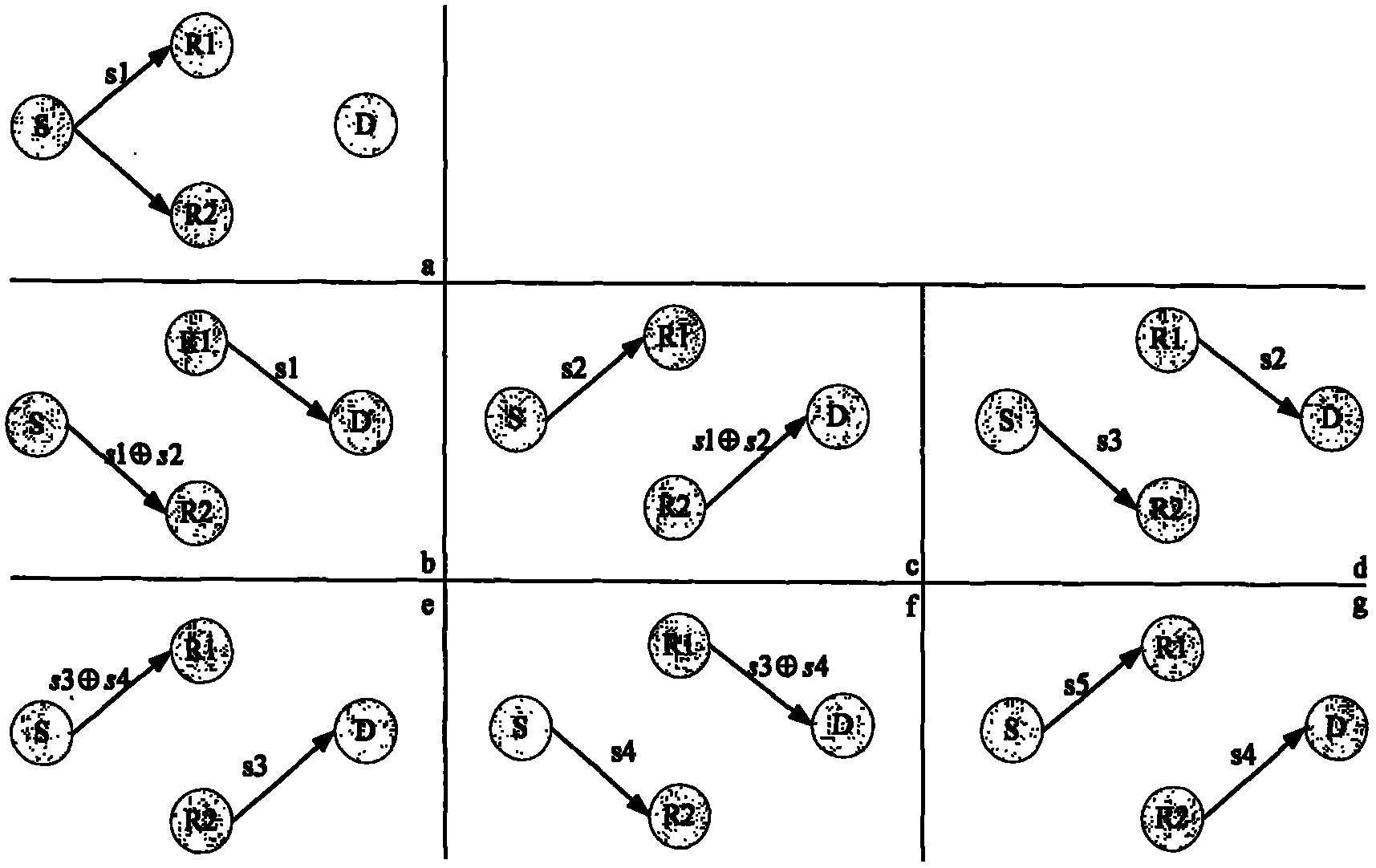Source end network coding and alternated transmission-based relay cooperation method
A network coding, source-side technology, applied in transmission systems, digital transmission systems, electrical components, etc., can solve the problems of higher transmission efficiency and higher performance requirements of relay equipment, to improve throughput, improve efficiency, and save time slots Effect
- Summary
- Abstract
- Description
- Claims
- Application Information
AI Technical Summary
Problems solved by technology
Method used
Image
Examples
Embodiment 1
[0024] Embodiment 1: Relay cooperation method based on source-end network coding and alternate transmission
[0025] This embodiment takes figure 1 with figure 2 The schematic diagram of the wireless communication system using the relay cooperative transmission of the present invention is shown to introduce the specific implementation manner of the present invention. figure 1 A schematic diagram of the structural model of the relay cooperative transmission wireless communication system of the present invention is given. figure 2 It is a schematic diagram of the transmission process of the relay cooperative transmission system of the present invention based on this structural model.
[0026] Such as figure 1 As shown, the present invention is based on the relay cooperation method of source network coding and alternate transmission, and the entire relay cooperative communication system includes a source S, two relays, the first relay R1 and the second relay R2, and a destin...
Embodiment 2
[0046] Example 2: Performance and Simulation
[0047] Figure 4 The diversity multiplexing compromise performance curve G of the relay cooperation method based on source-end network coding and alternate transmission of the present invention, the diversity multiplexing compromise performance curve E of the traditional relay method, and the distributed space-time code transmission method are given The comparison between the diversity multiplexing trade-off performance curve F and the direct transmission diversity multiplexing trade-off performance curve H. from Figure 4 It can be seen that, under the same diversity gain, the relay cooperation method of the present invention has greater multiplexing gain than the traditional relay method and the distributed space-time code transmission method. In the case of two relays, the traditional relay method transmits one message every three time slots, and the transmission efficiency is 1 / 3, and the distributed space-time code transmis...
PUM
 Login to View More
Login to View More Abstract
Description
Claims
Application Information
 Login to View More
Login to View More - R&D
- Intellectual Property
- Life Sciences
- Materials
- Tech Scout
- Unparalleled Data Quality
- Higher Quality Content
- 60% Fewer Hallucinations
Browse by: Latest US Patents, China's latest patents, Technical Efficacy Thesaurus, Application Domain, Technology Topic, Popular Technical Reports.
© 2025 PatSnap. All rights reserved.Legal|Privacy policy|Modern Slavery Act Transparency Statement|Sitemap|About US| Contact US: help@patsnap.com



